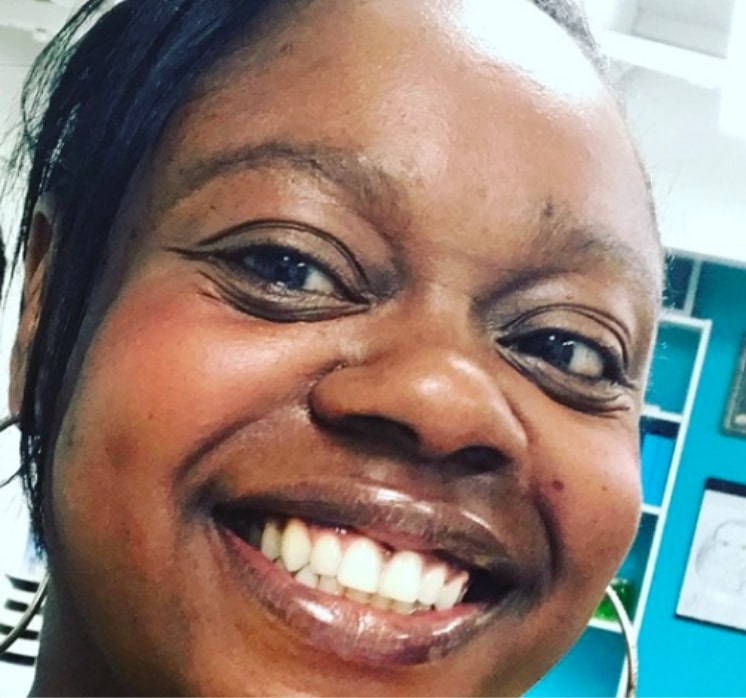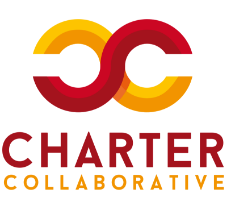
Shandrea Daniel
Founding Principal,
Future is Now Preparatory
Future is Now Preparatory
Location: Lake Hughes, CA
Year Opened: 2021
Student enrollment: 100
Grades served: 6th – 12th grade
Website: www.futureisnow.org
Student Demographics
Student demographics are not yet available. In accordance with the charter school laws in the state of California, Future is Now Preparatory will register students and host a lottery if enrollment exceeds available seats.
A PASSION FOR SUPPORTING VULNERABLE POPULATIONS
My passion for helping others goes all the way back to my dad’s struggles with mental illness. He has been in and out of prison his whole life since he was 14. In college, I majored in Psychology and got interested in counseling, because I wanted to help people figure out what they wanted to do with their lives. I started my work in education in 2005through an ad for a teacher position on Craigslist. I had just graduated from the University of Alabama at Birmingham and returned to LA, where I was working as an at-risk youth counselor and case manager. I wanted to become a school counselor, but I found out that I had to teach first, so I got hired as a 6th grade Social Studies teacher at Magnolia Science Academy 1 in Reseda, CA. Over the next 6 years, I taught Social Studies and Humanities across 6th through12th grades.
I left education for a few years and had my daughter, but I returned as Dean of Culture at Magnolia Science Academy3 in Carson, CA. I was responsible for helping with enrollment, parent engagement, a college readiness program for parents, and making sure the curriculum was being received based on a positive culture on campus. In the Fall of 2016,LAUSD turned down our charter renewal. We worked hard and finally got approval in January or February of 2017,but in the meantime, enrollment was down, teachers were quitting, and then the principal quit. When he left, he put my name into the hat to become principal. I had never envisioned being a school leader on that level, but I applied. I went through a 6-week process interviewing with parents, teachers, staff, and the home office. Finally, February 14,2017 was my first day being principal.
I learned so much in that role about operating a charter school: dealing with payroll, human resources, facilities, and navigating the political climate with city council members. I learned that building relationships in the city you’re serving is priority #1. If you are not fortunate to work in the city you grew up, becoming an intricate participant, community member, and citizen, to help is not only the right thing to do but will set your school up for success. Knowing the stakeholders in the school community for Parks & Recreation, Police, Fire, Community Centers, Convalescent Homes, Foster Care, Homeless Centers, City Council, Neighborhood Council is the best way to know and understand your community. However, as a leader of color, others felt I wasn’t capable of doing the job, because I didn’t have a Masters in Education or an administration credential. I left that role in June 2020 after a difficult 3years. It was a desire in my heart to pursue a credential, so I started an MA in Educational Leadership last year, which I will finish in 3-4 weeks.
A SCHOOL FOR HOMELESS AND FOSTER YOUTH
The opportunity to start Future Is Now Preparatory in Lake Hughes, CA came about because people had heard what I did in Carson and wanted to bring that to the Antelope Valley. Our mission is to serve homeless and foster youth. Over 50% of African American people in the Antelope Valley are homeless, and those are the ones who are counted. Our campus is 81 acres in the Angeles National Forest on a campsite, but we need a place for students to come together before we take them over the mountain to our campsite. I’ve connected with pastors in the community who are going to let us use their facility, which was once a school building, as a hub site.
Our plan was to open with a founding 9th grade class of 100 students and add two grades per year over the next 4years until the school spans grades 6-12. Our students will take Math, Science, English, and Career Technical Education (CTE) classes. We’re going to start with courses in Graphic Design and will add more CTE courses based on students’ interests. Each student will have an individualized academic plan and wrap around services that allows them to graduate high school and either find a trade, attend college, enter the military or national guard, or join a program where they’re helping others through volunteering.
We have hired a great staff that ranges from some people who are in internship positions all the way up to our Science teacher who has 24 years of experience teaching Science. Our CTE teacher worked at Disney and is a master craftsman. Each and every one’s story is somehow tied to them being in foster care or homeless at some point. The staff has experience working with those students already and they have perseverance and resilience. They’re flexible and able to adapt to change, and they’re also changemakers. Bringing community partnerships for alumni, internships, finding jobs for juniors and seniors and sending them on field trips within the state and out state to explore historically black colleges and universities were vital to students learning that their community is rich in value and culture and they can go to school, learn brilliant ways to help their community and come back to be are source and asset to help their communities be better.
COVID-19 CHALLENGES AND BLESSINGS
Due to the pandemic, we haven’t been able to find the students we want to serve. It’s been a struggle to get through to the Department of Child and Family Services to get referrals for students. The court systems are not open, so we can’t work with court-appointed advocates. As a result, we have made the difficult decision to delay our opening by a year.
Not being able to find and serve students keeps me up at night, but in a way, this year has been a blessing. It’s allowing us to think about safety and everything that needs to be in place to support this demographic of students. Finding moments when we can come together as a staff is critical. We were able to do a teacher in-service at our campsite, and when teachers came on campus and saw how beautiful and peaceful and perfect it is for students, it sealed the deal for a lot of them.
BETTER SERVING STUDENTS, TEACHERS, AND LEADERS OF COLOR
At my first school, it was difficult to be a charter leader of color, because I was constantly having to prove myself to others who didn’t see me as competent. I felt at my last school that I was discriminated against by leadership and parents, but there were so many students who were excited to see a black female principal, almost like moths to aflame. There’s a lot of pride and excitement that comes with being the first female Black principal at this school who gave a visual for young students of color to see that it’s possible. It opens up their horizons.
Our curriculum and instruction have to be at the forefront to help students of color. Curriculum and assessment have to change, because a lot of the curriculum and assessments aren’t in support of students advancing at the levels we hope and want. Leaders and teachers have to understand the communities they’re working in. The school should be a resource to the community, not taking kids out of the community to expel them, suspend them, make them feel less than. We need to take into account how kids want to learn and how they want to grow.
CHARTER LEADERS OF COLOR MATTER
In order to increase the number of charter leaders of color, we first need more teachers of color in the teacher pipeline. How people are recruited for those programs has to change, and the programs have to prepare them for the classroom and the licensure test. I struggled for a long time being a teacher. I had to teach myself what was critical to connect to students. I currently have five family members who can’t pass testing by the state. These tests perpetuate the cycle of us disconnecting from education for our children. We need a leadership pipeline to develop teachers to become leaders and plant schools in the communities they come from. I don’t want people to have to migrate out of their community to have a great education.
